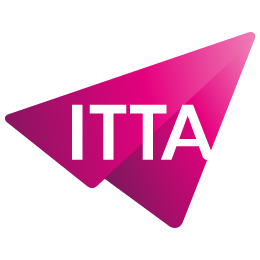Home > Trainings > Management > IT Service Management > ITIL® 4 Specialist – High-velocity IT
Digital transformation is reshaping traditional IT service management models. Organizations must respond to increasing demands and adapt to constantly evolving environments. The ITIL 4 Specialist – High-velocity IT course helps professionals understand these challenges and implement modern practices to address them effectively.
This program focuses on methods and practices tailored to high-velocity digital enterprises. It explains how to apply ITIL® 4 in dynamic contexts by integrating approaches such as Agile, Lean, and DevOps. These methods enhance team flexibility and accelerate value delivery to end users. The course also covers key technologies such as Cloud, automation, and continuous testing, all of which are essential to remain competitive.
Module 1: Understand the concepts related to the highly dynamic nature of the digital enterprise, including the demands it places on IT
Module 2: Understand the lifecycle of digital products in terms of the ITIL® operating model
Module 3: Understand the importance of ITIL® guiding principles and other concepts for high-velocity IT
Module 4: How to contribute to creating value with digital products?
ITIL® is a registered trademark of AXELOS Limited, used under permission of AXELOS Limited. All rights reserved.
This training prepares to the exam:
This accredited course is mandatory to enable full understanding of the core material
Today’s organizations operate in contexts where speed and adaptability are essential. Traditional service management models quickly reach their limits in the face of digital transformation. This is where the ITIL methodology becomes crucial. By integrating ITIL 4 principles, businesses learn to manage complex environments while maintaining service quality and resilience.
The concept of high velocity does not only mean going fast. It involves delivering digital services that are reliable, secure, and value-driven. Teams must strike a balance between execution speed and methodological rigor. This capability has become a strategic factor in a world where users expect services to be available at all times without interruption.
The ITIL 4 framework does not work in isolation. It builds on well-established approaches such as Agile and Lean. These methods emphasize collaboration, rapid iteration, and the elimination of waste. By combining these practices with ITIL, organizations strengthen efficiency and their ability to innovate. The combination of these approaches helps align IT projects with business needs and accelerates value delivery.
Companies that successfully leverage this complementarity achieve measurable results. They improve time-to-market, reduce operational costs, and increase team engagement. ITIL thus becomes a performance catalyst, capable of integrating different work cultures in support of digital transformation.
Modern technologies play a crucial role in fast-paced digital environments. The Cloud provides the flexibility needed to adapt resources to real needs, while automation speeds up processes by reducing manual interventions. Within ITIL 4, these tools support the strategic goals of organizations. They ensure services that are more stable, faster, and better aligned with user expectations.
Automation goes beyond technical deployments. It also covers continuous testing, system monitoring, and proactive incident management. By reducing reaction times, teams strengthen resilience and improve the user experience. Mastering these practices is therefore a valuable asset for any professional aiming to excel in digital service management.
Value creation is at the heart of the ITIL approach. In a high-velocity environment, the focus is not only on delivering quickly but on delivering meaningfully. Investments must be carefully assessed to ensure tangible returns. Portfolio management and relationship management become essential levers for prioritizing initiatives and maximizing their impact.
ITIL 4 provides the tools to measure this value and to adjust services according to user feedback. This adaptability is critical in environments where expectations evolve rapidly. By integrating these practices, organizations establish a solid model for co-creating value with their customers, partners, and employees.
Execution speed should never compromise security or compliance. High-velocity digital environments must embed effective control mechanisms. ITIL highlights practices that ensure services meet regulatory requirements while remaining efficient. This dual focus on compliance and resilience allows organizations to protect their reputation and build trust with users.
Resilient operations rely on the ability to anticipate incidents and quickly adapt to unexpected events. By applying ITIL 4 principles, teams implement systems that ensure service continuity, even in times of disruption. This capability has become indispensable for businesses heavily dependent on digital services.
What does high velocity mean in ITIL 4?
High velocity refers to an organization’s ability to quickly deliver reliable digital services while maintaining high value for users.
Why combine ITIL with Agile and Lean?
Combining ITIL with Agile and Lean strengthens collaboration, speeds up delivery, and optimizes resources, while maintaining a strong governance structure.
What are the advantages of automation in this context?
Automation reduces delays, minimizes human errors, and increases service resilience by ensuring faster and more reliable execution.
How does ITIL 4 promote compliance?
ITIL 4 integrates practices and processes that help organizations comply with regulations and secure digital environments while staying agile.
Who can benefit from the ITIL 4 Specialist – High-velocity IT course?
It is designed for IT managers, service management practitioners, project managers, and ITIL-certified professionals seeking to deepen their expertise.

Nous utilisons des cookies afin de vous garantir une expérience de navigation fluide, agréable et entièrement sécurisée sur notre site. Ces cookies nous permettent d’analyser et d’améliorer nos services en continu, afin de mieux répondre à vos attentes.
Monday to Friday
8:30 AM to 6:00 PM
Tel. 058 307 73 00
ITTA
Route des jeunes 35
1227 Carouge, Suisse
Monday to Friday, from 8:30 am to 06:00 pm.